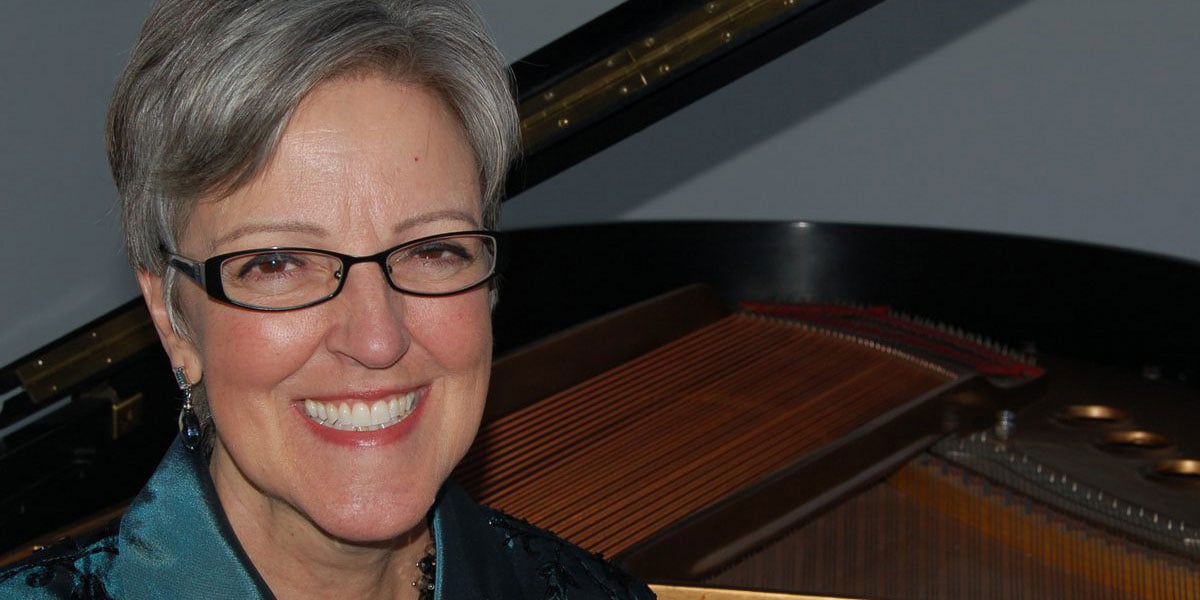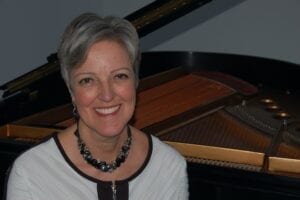What a piano teacher wants you to know when choosing your instrument
June 24, 2021 •Stephen Reed
(Note: M. Steinert & Sons asked veteran piano teacher Elizabeth Reed to put pen to paper regarding the kind of piano she would recommend to the families of her students. )


As a teacher, I delight in sharing my knowledge and experience with parents who are buying their first instrument or upgrading their current piano. Whether digital or acoustic, new or used, I celebrate the student’s wonder and excitement about this new instrument in their home.
When a student’s announcement of a new piano comes as a surprise, my natural enthusiasm is followed by this thought—I hope it’s a good piano. Consumers can collect a bounty of information from professional and avocational pianists’ blogs, piano makers’ websites, and musicians’ YouTube videos.
For better or for worse, most customers have made up their minds about the kind of instrument they want before they step foot in a store or contact a private seller.
But like piano playing, there are nuances behind the printed notes and the public’s comments. These are some of the musical considerations I wish parents would ask their teachers.
On the right, Mrs. Betty Reed, teacher, and author
Should I choose digital or acoustic?
There is no substitute for the natural reverberation of wood, strings and airwaves that you hear and feel in person. A relevant comparison is that the simulated sound of a digital keyboard is like visiting someone on Zoom.
A family’s budget is a determining factor in choosing a digital or acoustic piano. But the future value needs to be considered. For example, recently-purchased and well-maintained acoustic pianos retain more of their value than a digital keyboard.
If students begin with a digital keyboard, I tell parents that after two years (three years maximum) students will need an acoustic piano. When it comes to the feel of the action, I use mattress buying as a comparison. The keys shouldn’t be so light that you sink to the bottom at first touch.
Finally, it will be impossible to create dynamic contrasts and finger technique will be weak. The action should be firm enough to press the key at a slow and a fast pace, as if lying down gently or jumping on a mattress.
Should I buy new or used?
When buying a used acoustic piano from a private seller, a piano tuner should evaluate it first. No ifs, ands, or buts. Engaging the services of a good piano tuner is akin to having a competent auto mechanic looking over a used car. You don’t want to miss any easily-discovered problems before your final purchase.
I would avoid buying a used digital keyboard because prices for new ones are reasonable.
If affordable, a new piano is always the best option, due to “less mileage” on the piano, the warranty, and the fact that quality piano models are always being refined every year.
How do I test drive a piano?
On a digital keyboard, dynamics must be produced by playing a key with a light or heavy touch–not by turning the volume knob!
Make sure there are 88 working keys. Count them. Play. Every. Single. Key.
The damper pedal, the one on the right, is crucial. The seller should demonstrate if parents have no piano experience.
Do I have room for the piano?
A lack of space is often a primary concern when choosing a piano. But there isn’t much of a difference between a digital and an acoustic—the depth of an acoustic is approximately ten inches deeper and the general width is the same.
I suggest that parents frame out the dimensions with paper and place it on the floor to compare the difference. A student’s bedroom, a dining room, family or living room that is free of TV, even a hallway are possible locations for a piano.
I ask parents to think about a favorite place for them to sit and read. Then I ask if they can move the piano into that spot. Hung-Kuan Chen, Steinway artist and Professor of Piano at The Juilliard School of Music, studied in Germany and had a grand piano in his dorm room—and nothing else. Mr. Chen slept underneath the piano and used the piano lid as a table and desk. Pianists can find space for a piano in any house or apartment!
All teachers have horror stories about students’ decrepit pianos and uninviting practice spaces. Even if a basement is finished, there is a psychological leeriness of having to go practice—in the basement.
My two horror stories featured unfinished basements—one with a player-piano, painted green, and the bench from a picnic table for the seat. The other was an ancient piano that was permanently a half-step flat, had missing keys, stood next to the cat litter box and shared space with exercise equipment under a sagging ceiling.
Was it a surprise both students quit after only one year? Both homes were single family houses in well-to-do suburbs.
How much maintenance is required?
Maintenance is an issue only for an acoustic piano, which needs to be tuned at least once a year by a professional tuner. I once had a student who couldn’t practice for three weeks because the untrained friend of a parent offered to tune the piano for free. He had removed the entire action and then couldn’t put it back together again.
They finally called a professional tuner to resolve the crisis. Again, the piano tuner is like the mechanic of a car. You want your instrument to produce a consistent hum, not clicks and clacks.
How about the bench and footstool?
One of the most neglected aspects of piano buying and playing is the bench. Tone is all for naught if the student does not have the proper height and distance at the keyboard,with feet firmly supported on a footstool or the floor. Adjustable benches can be bought for less than the cost of one season of soccer games and equipment.
A low ottoman or a $6 plastic footstool from Ikea work just as well. I have footstools that I loan out whenever possible.
What do I need to know about moving?
If your acoustic piano is not being delivered from a store, Do Not Move A Piano Yourself or With Friends. Hire a professional piano mover and buy the insurance.
My first grand piano was craned into a third-floor apartment through the balcony (and down again) to a second-floor apartment along a narrow path and through the back porch. As I paced my apartment, I was comforted in knowing my piano was insured in case of a calamity.
My mother was a piano teacher and I have witnessed many a nerve-racking move, from the grand piano whose lid had to be taken off because of the limited height on a staircase, to the men who lost control of our old upright piano on our steep back stairs.
The piano barreled down the stairs with the bottom man holding on for dear life, when by sheer coincidence my father opened the back door, saw the impending disaster and braced both the man and the piano, preventing a crash through our cellar door and down another steep flight, this time cement stairs.
A teacher’s input
Teachers want their students to love music and to delight in the sounds of a piano. There are instruments with good sound at every price point. Do your internet research. Stay open to different options. And next time you’re looking for a piano, ask your teacher for advice!
M. Steinert & Sons thanks Ms. Reed for her frontline insights. For more information, learn more about the piano offerings at M. Steinert & Sons.
Featured Articles
Categories
- Beginner Pianos (23)
- Boston Pianos (15)
- Comparisons (30)
- Designer and Specialty Pianos (8)
- Essex Pianos (10)
- Events (11)
- Featured (24)
- Institutional (3)
- Joy of Piano (15)
- Learning About Pianos (69)
- News (35)
- Pricing and Cost (19)
- Resource Center (122)
- Roland Pianos (6)
- Spirio (15)
- Steinway Pianos (70)
- Student (14)
- Teacher (13)
- Used Pianos (20)
- Videos (19)

